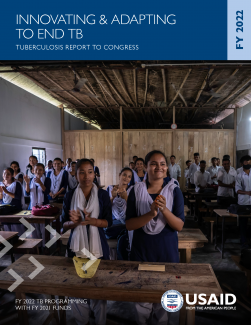Nearly 30 years after the World Health Organization (WHO) declared tuberculosis (TB) a public health emergency, the disease remains one of the world’s leading infectious disease killers–claiming more lives each year than HIV and malaria combined. Until the emergence of COVID-19, the bacterium that causes TB was described as “the most destructive pathogen on the planet.”1 Despite being preventable, treatable, and curable, this ancient disease persists, resurges, and continues to take a global toll–particularly among the most vulnerable and poorest populations.
Across the world, millions of people–mainly in low-and middle-income countries–continue to suffer and die from TB each year due to a range of factors including lack of access to TB services; financial constraints; stigma and discrimination; high-risk co-morbidities (see health risk factors table below); socioeconomic determinants including poor living conditions and changing climate; and the slow development of new diagnostics, drugs, and vaccines. In 2020, the onset of the COVID-19 pandemic had a devastating impact on the global TB response, compounding these factors and resulting in even further suffering and death from TB.
While in 2021, there were initial signs of recovery from COVID-19’s impact, global TB cases and deaths still increased, with an estimated 10.6 million people falling ill with TB, and almost 1.6 million people dying. Global case notifications improved slightly, with 61 percent of estimated incident cases reported to National TB Programs (NTPs) and started on treatment. This was around a five percent increase from 2020, but still a decline from 2019 levels.
Despite an increase in the availability of rapid molecular tests, many TB cases are not appropriately diagnosed. Only 63 percent of the estimated pulmonary TB cases reported in 2021 were bacteriologically confirmed, and only 38 percent of notified cases were tested with WHO-recommended rapid molecular tests.
Drug-resistant TB (DR-TB), which causes one-third of all deaths due to antimicrobial resistance (AMR),4 remains a global public health challenge in that it is more deadly, and more difficult and expensive to diagnose and treat. DR-TB, which includes multidrug-resistant TB (MDR-TB) and extensively drug-resistant TB (XDR-TB)5 are TB variants that are resistant to at least rifampicin. In 2021, 450,000 people developed these deadlier, drug-resistant forms of TB.6 Of those with DR-TB, 154,405 people (34 percent) started on treatment in 2021.

